
The Enchanting Quartier Saint-Nicaise of Rouen
Discover the medieval charm and cultural richness of Quartier Saint-Nicaise in Rouen, with its historic architecture, vibrant arts scene, and delectable local cuisine.
Nestled in the heart of Rouen, Quartier Saint-Nicaise is a charming neighborhood rich in history and culture. This delightful area is known for its picturesque streets lined with half-timbered houses dating back to the medieval era. As you wander through its cobblestone lanes, you'll feel as if you've stepped back in time. The neighborhood is home to the stunning Saint-Nicaise Church, a beautiful example of Gothic architecture that dates back to the 14th century. The church tower offers a breathtaking view of Rouen's skyline, making it a must-visit spot for photography enthusiasts. Surrounding the church, you'll find quaint cafés and bistros where you can savor local delicacies like tarte tatin and Normandy cider. Quartier Saint-Nicaise also boasts a vibrant arts scene. Don't miss the various art galleries and craft shops showcasing the work of local artisans. The neighborhood often hosts cultural events and festivals, providing a perfect opportunity to immerse yourself in the local traditions and customs. Whether you're a history buff, a foodie, or an art lover, Quartier Saint-Nicaise offers a unique and memorable experience.
Local tips in Quartier Saint-Nicaise
- Visit the Saint-Nicaise Church early in the morning to avoid the crowds and enjoy a peaceful experience.
- Wear comfortable shoes as the cobblestone streets can be uneven and challenging to walk on.
- Check the local event calendar for festivals and cultural events happening during your visit.
- Try the local cuisine at one of the neighborhood bistros, especially the tarte tatin and Normandy cider.
- Bring a camera to capture the stunning medieval architecture and scenic views from the church tower.
The Enchanting Quartier Saint-Nicaise of Rouen
Nestled in the heart of Rouen, Quartier Saint-Nicaise is a charming neighborhood rich in history and culture. This delightful area is known for its picturesque streets lined with half-timbered houses dating back to the medieval era. As you wander through its cobblestone lanes, you'll feel as if you've stepped back in time. The neighborhood is home to the stunning Saint-Nicaise Church, a beautiful example of Gothic architecture that dates back to the 14th century. The church tower offers a breathtaking view of Rouen's skyline, making it a must-visit spot for photography enthusiasts. Surrounding the church, you'll find quaint cafés and bistros where you can savor local delicacies like tarte tatin and Normandy cider. Quartier Saint-Nicaise also boasts a vibrant arts scene. Don't miss the various art galleries and craft shops showcasing the work of local artisans. The neighborhood often hosts cultural events and festivals, providing a perfect opportunity to immerse yourself in the local traditions and customs. Whether you're a history buff, a foodie, or an art lover, Quartier Saint-Nicaise offers a unique and memorable experience.
Iconic landmarks you can’t miss
place du Vieux-Marché
Explore the vibrant Place du Vieux-Marché in Rouen, a historic square filled with fresh food markets, rich heritage, and stunning architecture.

Le Gros-Horloge
Experience the beauty and history of Le Gros-Horloge, a stunning clock tower in Rouen, France, showcasing Gothic architecture and rich cultural heritage.

Rouen Botanical Garden
Explore the breathtaking beauty of Rouen Botanical Garden, a serene oasis filled with diverse plant life and tranquil pathways in the heart of France.

Square Verdrel
Discover the tranquility of Square Verdrel, a beautiful city park in Rouen, France, perfect for relaxation and cultural exploration.

Aitre Saint Maclou
Explore Aitre Saint Maclou, a historical landmark in Rouen, France, combining stunning Gothic architecture with rich cultural heritage.

Saint-Ouen Abbey Church
Discover the breathtaking Saint-Ouen Abbey Church in Rouen, a Gothic masterpiece and historical landmark rich in culture and serene beauty.

Église Saint-Nicaise de Rouen
Discover the breathtaking Église Saint-Nicaise in Rouen, a stunning Catholic church showcasing Gothic architecture and rich history, perfect for tourists.

Place Saint-Clément
Explore the historical charm of Place Saint-Clément, a scenic spot in Rouen where local culture and rich history come alive.

Parlement de Normandie
Explore the Parlement de Normandie, a stunning historical landmark in Rouen, showcasing rich architectural heritage and fascinating history.
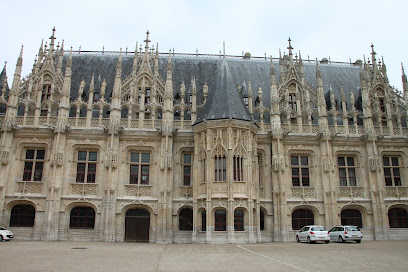
La Maison Sublime
Explore La Maison Sublime, a museum in Rouen that showcases the rich artistic heritage and creativity of the region, perfect for culture lovers and art enthusiasts.

Unmissable attractions to see
l'Hôtel-de-Ville Garden
Discover the tranquility of L'Hôtel-de-Ville Garden in Rouen, a lush city park perfect for relaxation and nature exploration amidst historic surroundings.

Église Saint-Nicaise de Rouen
Explore the Église Saint-Nicaise de Rouen, a stunning Gothic church that embodies the rich history and culture of this beautiful French city.

Essential places to dine
Les Fils à Maman Rouen
Experience authentic French cuisine with a modern twist at Les Fils à Maman Rouen - where every dish tells a story.

Brasserie du Drugstore
Discover the delightful flavors of France at Brasserie du Drugstore in Rouen – where tradition meets innovation in every dish.

La Petite Bouffe
Discover the essence of French cuisine at La Petite Bouffe in Rouen - where every dish tells a story.

le P'tit Zinc
Experience authentic French cuisine at le P'tit Zinc in Rouen's historic Vieux Marché – where every dish tells a story.

L'ODAS
Discover exquisite Haute French cuisine at L'ODAS in Rouen – where culinary artistry meets elegance.

Restaurant La Petite Auberge
Experience authentic French cuisine at Restaurant La Petite Auberge in Rouen – where tradition meets taste in a charming setting.

Gill
Experience unparalleled French cuisine at Gill in Rouen, where every dish is a work of art celebrating Mediterranean flavors.

Les Gens Heureux
Experience authentic French cuisine at Les Gens Heureux in Rouen, where tradition meets culinary excellence in a cozy setting.

Lé Là Restaurant
Discover the exquisite flavors of France at Lé Là Restaurant in Rouen - where culinary artistry meets warm hospitality.

Restaurant des Beaux Arts
Experience exquisite French cuisine at Restaurant des Beaux Arts in Rouen—where culinary artistry meets charming ambiance.

Markets, malls and hidden boutiques
Docks 76
Explore Docks 76 in Rouen, France - a vibrant shopping mall offering diverse stores, delicious dining, and entertaining experiences for every visitor.

Saint Sever
Experience the vibrant shopping scene at Saint Sever, Rouen's premier shopping mall, offering diverse stores, delightful dining, and a lively atmosphere.

Printemps Rouen
Discover the chic allure of Printemps Rouen - a stylish department store featuring fashion, beauty, and luxury goods in the heart of the historic city.

MARIE SIXTINE - ROUEN
Explore Marie Sixtine, a chic boutique in Rouen offering unique clothing and accessories that reflect the elegance of French fashion.
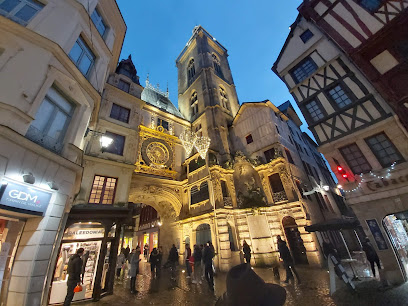
Galeries Lafayette Rouen
Explore Galeries Lafayette Rouen, a vibrant department store blending fashion, beauty, and local culture in the heart of Rouen.
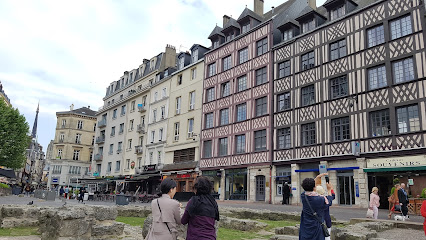
UNICARouen
Explore UNICARouen, a unique home goods store in Rouen offering exquisite items that add charm and style to any home.

ROUEN SOUVENIRS
Explore the charm of Rouen with unique gifts and local delicacies at Rouen Souvenirs, a must-visit spot for every traveler.
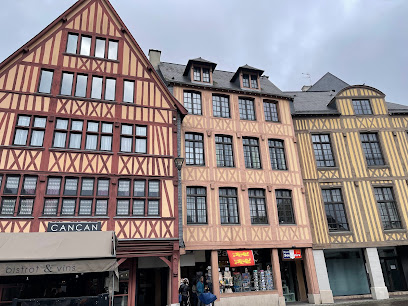
Chez Jean'ette
Discover the charm of French fashion at Chez Jean'ette, a stylish clothing store in Rouen offering unique apparel and accessories for every taste.

La Vitrine
Explore La Vitrine, Rouen's premier gift shop, offering an exquisite array of unique items, from leather goods to costume jewelry and more.

Atelier 9
Discover unique handcrafted gifts at Atelier 9 in Rouen, where local artisans showcase their creativity through beautiful and memorable treasures.

Essential bars & hidden hideouts
La Fée Torchette
Experience the vibrant atmosphere and delightful drinks at La Fée Torchette, Rouen's must-visit bar for locals and tourists alike.

Côcoon Bar
Experience the vibrant nightlife at Côcoon Bar in Rouen, where exquisite cocktails meet delightful tapas in a lively atmosphere.

The 3 Rooms Muzik'Club
Discover the heart of Rouen's nightlife at The 3 Rooms Muzik'Club, where live music and a vibrant atmosphere create unforgettable experiences.

Milk
Discover the vibrant atmosphere of Milk, a premier lounge and cocktail bar in Rouen, perfect for relaxation and socializing.

L’Absinthe Cocktail
Discover L’Absinthe Cocktail in Rouen, a vibrant cocktail bar offering exquisite drinks, delicious tapas, and a lively atmosphere perfect for nightlife enthusiasts.
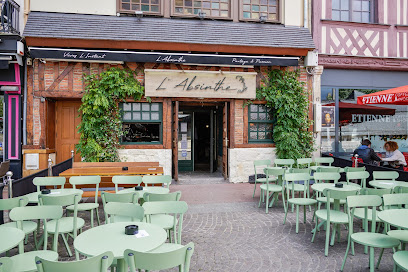
Le Petit Bar Cocktails
Discover the art of cocktail making at Le Petit Bar Cocktails, where each drink tells a story in the heart of Rouen.

N'zo Café
Experience the vibrant atmosphere of N'zo Café in Rouen, where local beer and French hospitality come together in a delightful setting.

L'Église-Brasserie
Experience the taste of Rouen at L'Église-Brasserie, where local flavors and a warm atmosphere come together for a memorable dining experience.
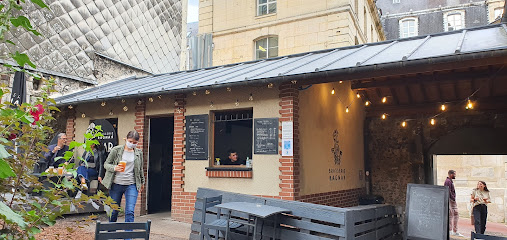
L'Élixir • Speakeasy Cocktail Lounge
Experience the allure of L'Élixir, Rouen's premier speakeasy cocktail lounge, where creativity meets exquisite mixology in an enchanting atmosphere.

VICTORINE JAZZ & WINE
Experience the perfect blend of live jazz, fine wines, and gourmet dining at VICTORINE JAZZ & WINE in Rouen.

Local Phrases
-
- HelloBonjour
[bohn-zhoor] - GoodbyeAu revoir
[oh ruh-vwahr] - YesOui
[wee] - NoNon
[nohn] - Please/You're welcomeS'il vous plaît / De rien
[seel voo pleh / duh r'yehn] - Thank youMerci
[mehr-see] - Excuse me/SorryExcusez-moi / Désolé
[ehk-skew-zay mwah / day-zoh-lay] - How are you?Comment ça va?
[koh-mohn sah vah] - Fine. And you?Bien. Et toi?
[byen. eh twah] - Do you speak English?Parlez-vous anglais?
[pahr-lay voo ahn-glay] - I don't understandJe ne comprends pas
[zhuh nuh kohm-prahnd pah]
- HelloBonjour
-
- I'd like to see the menu, pleaseJe voudrais voir le menu, s'il vous plaît
[zhuh voo-dray vwah-r lay muh-nyoo seel voo pleh] - I don't eat meatJe ne mange pas de viande
[zhuh nuh mahnj pah duh vee-and] - Cheers!Santé!
[sahn-tay] - I would like to pay, pleaseJe voudrais payer, s'il vous plaît
[zhuh voo-dray pay-ay seel voo pleh]
- I'd like to see the menu, pleaseJe voudrais voir le menu, s'il vous plaît
-
- Help!Au secours!
[oh suh-koor] - Go away!Allez-vous-en!
[ah-lay vooz ahn] - Call the Police!Appelez la police!
[ah-pay-lay lah poh-lees] - Call a doctor!Appelez un médecin!
[ah-pay-lay uh may-duh-sahn] - I'm lostJe suis perdu
[zhuh swee pair-doo] - I'm illJe suis malade
[zhuh swee mah-lahd]
- Help!Au secours!
-
- I'd like to buy...Je voudrais acheter...
[zhuh voo-dray zah-shay...] - I'm just lookingJe regarde juste
[zhuh ruh-gahrd juhst] - How much is it?Combien ça coûte?
[kohm-byen sah koot] - That's too expensiveC'est trop cher
[say troh shehr] - Can you lower the price?Pouvez-vous baisser le prix?
[poo-veh voo beh-say lay pree]
- I'd like to buy...Je voudrais acheter...
-
- What time is it?Quelle heure est-il?
[kehl er ay-teel] - It's one o'clockIl est une heure
[eel ay oon er] - Half past (10)Dix et demie
[dees ay deh-mee] - MorningMatin
[mah-tahn] - AfternoonAprès-midi
[ah-pray me-dee] - EveningSoir
[swahr] - YesterdayHier
[ee-air] - TodayAujourd'hui
[oh-zhoor-dwee] - TomorrowDemain
[duh-mahn] - 1Un
[uhn] - 2Deux
[duh] - 3Trois
[twah] - 4Quatre
[kah-truh] - 5Cinq
[sank] - 6Six
[sees] - 7Sept
[sept] - 8Huit
[wheat] - 9Neuf
[nuff] - 10Dix
[dees]
- What time is it?Quelle heure est-il?
-
- Where's a/the...?Où est...
[oo ay...] - What's the address?Quelle est l'adresse?
[kehl ay lah-dress] - Can you show me (on the map)?Pouvez-vous me montrer (sur la carte)?
[poo-veh voo muh mohn-tray (sewr lah kart)] - When's the next (bus)?Quand est le prochain (bus)?
[kahn ay luh proh-shahn (boos)] - A ticket (to ....)Un billet (pour ....)
[uhn bee-yay (poor)]
- Where's a/the...?Où est...
History of Quartier Saint-Nicaise
-
Quartier Saint-Nicaise, named after the Saint-Nicaise church, has roots that trace back to the medieval period. The area was originally a small village outside the city walls of Rouen, with agricultural activities and a close-knit community setting the foundation for its development. The church itself, with origins dating to the 11th century, became a significant landmark, influencing the growth of the neighborhood.
-
During the tumultuous years of the Hundred Years' War (1337-1453), Rouen, including Quartier Saint-Nicaise, experienced significant conflict as it changed hands between the English and the French. The neighborhood, being on the fringes of the city, saw its share of skirmishes and unrest, which affected its population and development. The war led to a decline in local trade and agriculture, impacting the community's economy.
-
The 16th century marked a period of growth for Quartier Saint-Nicaise, coinciding with the Renaissance in Rouen. The neighborhood began to see an influx of artists and merchants, leading to a more vibrant cultural scene. The proximity to the Seine River facilitated trade and commerce, contributing to the economic revival of the area. Notable architectural developments from this era include the expansion of residential buildings and public spaces.
-
The 19th century brought significant industrial change to Rouen, and Quartier Saint-Nicaise was no exception. With the rise of factories and the expansion of the port, the neighborhood became more urbanized. This period saw an increase in population as workers moved in for job opportunities. The architectural landscape shifted as traditional homes were replaced or transformed into multi-family dwellings to accommodate the growing workforce.
-
During World War II, Rouen suffered extensive damage due to bombings, and Quartier Saint-Nicaise was affected as well. Post-war reconstruction efforts were crucial in revitalizing the neighborhood, with modernist architecture replacing many of the buildings lost during the conflict. This period also saw a resurgence of community initiatives aimed at preserving the cultural heritage of the area while adapting to modern needs.
-
In recent years, Quartier Saint-Nicaise has embraced a cultural renaissance. The neighborhood has become a focus for artistic expression, with galleries, cafes, and cultural events showcasing local talent. Efforts to preserve historical sites, such as the Saint-Nicaise church, have been prioritized, attracting both locals and tourists. The blend of historical significance and modern vibrancy makes Quartier Saint-Nicaise a unique representation of Rouen's evolving identity.
Quartier Saint-Nicaise Essentials
-
Quartier Saint-Nicaise is conveniently located in Rouen, accessible by various means of transportation. From the Rouen-Rive-Droite train station, you can take a short 15-minute walk to reach the neighbourhood. Alternatively, local buses operate frequently, with several routes connecting to Saint-Nicaise. If arriving from other neighbourhoods, the T1 tram line also has stops nearby, making it easy to navigate.
-
Within Quartier Saint-Nicaise, the best way to get around is on foot, as most attractions are within walking distance. Public transportation options include buses and trams, which run regularly throughout the day. For a more local experience, consider renting a bicycle from one of the many bike-sharing services available in Rouen, allowing you to explore the area at your own pace.
-
Quartier Saint-Nicaise is generally safe for tourists, but standard precautions are advisable. Avoid poorly lit streets at night, and be mindful of your belongings in crowded areas. While there are no specific high-crime areas targeting tourists, petty crimes like pickpocketing can occur, especially in busy markets and public transport. It's wise to remain vigilant and aware of your surroundings.
-
In case of emergency, dial 112 for immediate assistance (police, fire, medical). Local hospitals and clinics are available for medical emergencies, and it is advisable to have travel insurance that covers health issues. Pharmacies are also scattered throughout the neighbourhood for minor ailments. Keep a list of emergency contacts handy, including your country's embassy.
-
Fashion: Do dress comfortably, but be respectful, especially when visiting churches. Avoid overly revealing attire. Religion: Do respect local customs; be quiet in religious settings. Public Transport: Do be polite and give up your seat for elderly or disabled individuals. Don't eat or drink on buses or trams. Greetings: Do greet locals with a friendly 'Bonjour' and a smile. Eating & Drinking: Do enjoy local cuisine at cafés and restaurants, but don't waste food, as it is considered disrespectful.
-
To experience Quartier Saint-Nicaise like a local, visit the nearby markets for fresh produce and local delicacies. Engage with shopkeepers and ask for recommendations; they often share insider tips about the best spots to visit. If you're interested in history, take a guided walking tour to learn about the neighbourhood's rich past. Don't forget to try the local cider and pastries at one of the charming cafés.
Nearby Cities to Quartier Saint-Nicaise
-
Things To Do in Amiens
-
Things To Do in Versailles
-
Things To Do in Caen
-
Things To Do in Paris
-
Things To Do in Lille
-
Things To Do in Ypres
-
Things To Do in Tournai
-
Things To Do in Reims
-
Things To Do in Kortrijk
-
Things To Do in Nieuwpoort
-
Things To Do in Gorey
-
Things To Do in Tours
-
Things To Do in St. Clement
-
Things To Do in Trinity
-
Things To Do in Ostend-Bruges International Airport










